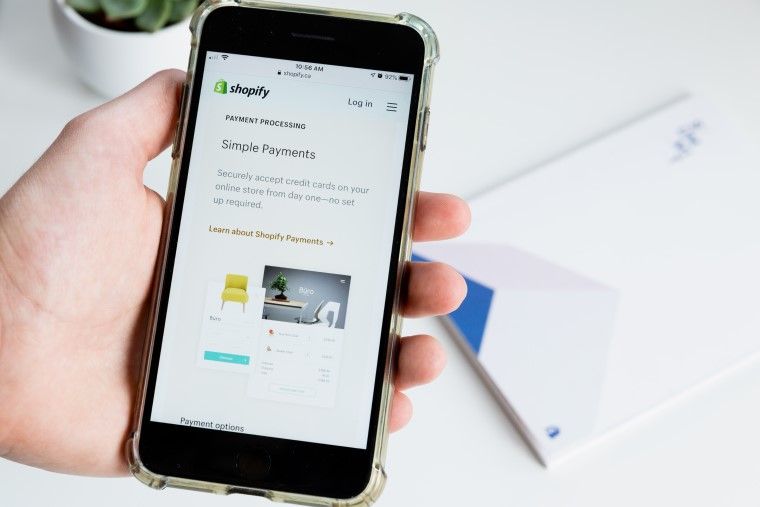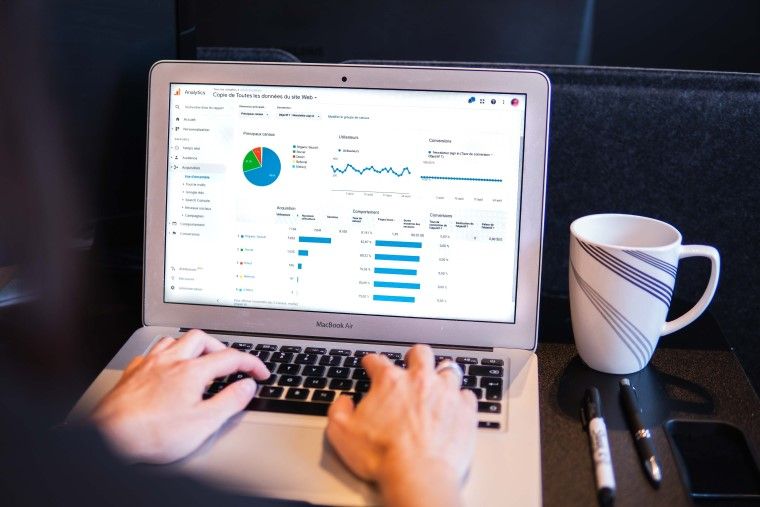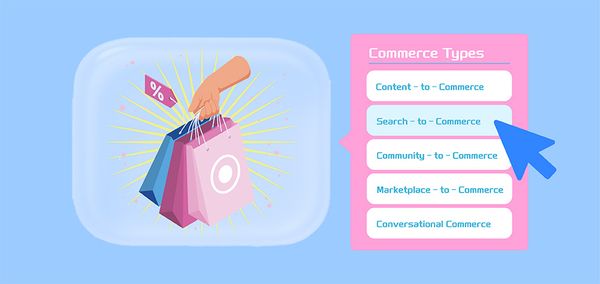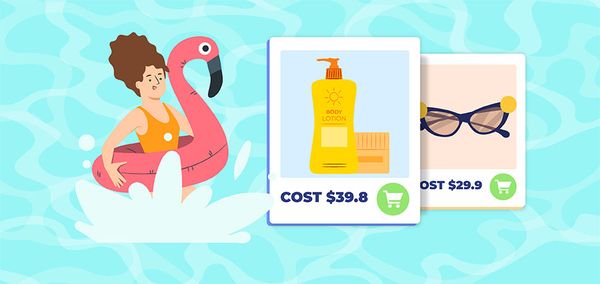Common Dropshipping Fraud and How to Stop It Effectively

The dropshipping business model has become very popular. And having dropship suppliers as an additional source of merchandise to an already developed e-commerce catalog is a growing trend in the eCommerce industry.
It's effective for store owners looking for ways to expand their product line without running up their inventory debt. From the "work-from-home sellers" on Shopify to the large global chains like Walmart, many e-commerce websites are taking advantage of dropshipping's hyper-efficient, low-risk model.
Before we go into highlighting the common dropshipping fraud you should keep an eye out for, it’s useful to answer some fundamental questions.
What Is Dropshipping
In simple terms, dropshipping enables online retailers to provide consumers with a wide range of products without investing directly inexpensive inventory or its ancillary costs. Dropshipping vendors forward customer orders directly to the merchandise supplier, i.e., the drop-shipping partner. The dropshipping partner then sends the products to customers on behalf of the vendor, the dropshipper. As a result, the vendor does not have to handle inventory or worry about product warehousing. Instead, they only act as the intermediary for sale.
Dropshippers make their profit from the difference between the price they charge in their online store and what the drop-shipping partner charges.
Below are the key stakeholders involved in a dropshipping cycle:
- Manufacturer who creates the products. They usually don’t sell to the public; instead, they sell bulk to wholesalers and retailers.
- Wholesaler who purchase merchandise from manufacturers and then add a mark-up price before selling them to the retailer. A wholesaler could stock products from several manufacturers, giving retailers options and variety as a common practice.
- Retailer who sell products directly to the final consumer at a mark-up.
Here’s how the dropshipping cycle works:
- The consumer places an order via the retailer's website or Social Media account.
- Dropshipper alerts the dropshipping partner — either the manufacturer or the wholesaler — who packages and ships the product directly to the consumer.
- The dropshipping partner charges the dropshipper for the service delivered, and the dropshipper charges the consumer with a mark-up.
Advantages of Dropshipping?
The dropshipping business model is an easy route to get into an eCommerce business if you're low on startup capital. Or you need to test the waters before committing a bulk of your resources to the company.
The main advantages of the dropshipping business model are as follows:
● It's less expensive to start.
Running an e-commerce business comes with peculiar challenges. And managing inventories and ancillary costs are a massive chunk of that challenge. But if you remove having to deal with physical goods, you can readily focus on ensuring the customer gets what they ordered on time. And drop shipping makes that possible.

You don't have to concern yourself with managing or paying for warehousing, packaging, and shipping orders, tracking orders for proper inventory accounting, handling returns, and inbound order shipments. Plus, having to order products and manage stock levels continually is also not up to you as your wholesale partner deals with that.
● Barriers to entry into dropshipping are low.
You can start a successful dropshipping business with little or no money since you don't have to invest in product inventory and ancillary costs. All you need is a smartphone and a good internet connection. Your overhead costs will likely increase as you grow. But you can be sure they will remain low compared to traditional brick-and-mortar businesses or other eCommerce verticals.
| Get Started Now to Grow Your Online Business with the Best AliExpress Dropshipping Tool - DSers! |
● Dropshipping has limited fixed costs.
Again, since you don’t have to purchase and manage inventory, fixed costs are pretty minimal. If you don't sell anything, you won't lose any money. Your expenses would be the time it took to list them on your site or the cost of ads for Social Media promo.
● Dropshipping offers flexibility.
Your office is your smartphone or laptop with an internet connection, that's it. You can operate a dropshipping business from anywhere. It's a great model for students looking to make extra cash to supplement their living expenses. And for anyone that lost their job because of the pandemic to stay afloat while figuring things out.
● With dropshipping, you have a variety of products.
Dropshippers don't have to stock items in advance. So it's easy for one to offer a wide variety of products. The downside to this is the difficulty in finding suppliers for those products and ensuring you're getting a good deal too. The same supplier you work with might be working with multiple dropshippers.
● Dropshipping offers fewer operational risks.
As a dropshipper, your operational risk is equally low. You only "buy" the merchandise when it sells - hence you don't have to deal with overhead costs related to inventory management.
Challenges in Dropshipping Business
As you would’ve observed, dropshipping is not all glam and fun. There are substantial risks that, if not planned for, could hinder your success. We highlight the major ones as follows:
● High competition.
The barrier to entry is low; anyone can wake up tomorrow and start a dropshipping business. The work is in making your business stand out from the sea of other dropshippers. You will face much competition from full-time dropshippers and other eCommerce merchants who use the same sales medium.
● Low margins.
You build your wealth with what you make after each sale. And because there are many other dropshipping who might be offering similar products as you, many vendors set up shops and sell items at rock-bottom prices to grow revenue. Product differentiation will play a crucial part in your sustainability here.
● Inventory issues.
If you stock all the products you sell, it’s relatively easy to track which items are available or not. However, this information is not always synchronized with your store when working with a third-party concierge. So you could get blindsided when a customer places an order, and your supplier does not have that in stock.
● Shipment complications.
Assuming you work with multiple suppliers—as most dropshippers do—you probably source the products on your website from a variety of suppliers. That could add some complications to your shipping costs.
● Supplier errors.
If a supplier ships the wrong item, the customer doesn't know that it's not your fault. They'll blame you because you're the face they know. And you'll have to accept responsibility for the mistake.
● Losses from fraudulent purchases.
The dropshipping model is convenient, efficient, and scalable—so it's also ripe for credit card fraud. The size of many drop-shipping businesses and high average transaction values mean these businesses have a lot to lose if even one order turns out to be fraudulent. Drop-shippers are prime targets for savvy fraudsters. And we'll talk about that in the subsequent section.
Now that we’ve covered the basics, let’s talk about dropshipping frauds and scams.
Common Dropshipping Frauds
Like all growths in business, even as drop shipping is becoming more appealing to many, the industry is also witnessing growth in unscrupulous scam artists. These con artists are more than happy to relieve vendors of their hard-earned cash without offering anything of value in return.
Dropshipping scams can fool even the savvy retailer - so it's in your best interest to stay vigilant and watch out for the red flags we're about to discuss. Ignore them, and you'll lose a good deal of money.
● Fake Wholesalers
Some retail stores often pose as wholesale suppliers to sell more, but they mark up the prices like crazy. You want to work with genuine wholesalers who buy directly from the manufacturer and offer you much better pricing.
If you're new to dropshipping and want to secure a partnership with a wholesaler, it might be difficult to tell the real ones from the fakes. Fake wholesalers often seem more credible to an untrained eye because legitimate wholesalers tend to be less marketing-savvy. On the other hand, counterfeit suppliers often excel at marketing, so they'll pop up a lot when you search.
These are critical tell-tale signs that give away fraudulent dropshipping wholesaler vendors:
1. They're selling products to the public. Retailers who pose as wholesalers sell to the general public. They make the customer think they're getting a great deal by advertising "wholesale prices." However, what they're doing is selling products at excessive prices and then slapping the wholesale label on them. When you see that red flag, run, it's proof-positive that such vendor isn't a legitimate wholesaler. Any wholesaler listing their prices to the general public is also fake. Wholesalers generally don't list their prices publicly.

2. They charge ongoing fees. Charging ongoing fees is another way for fake suppliers to squeeze more money from unsuspecting dropshippers. They charge their victims a monthly fee just for doing business with them. No authentic wholesaler would ever do that.
3. They don’t want to sign any contracts. That is a red flag. You're not dealing with a genuine wholesaler. Actual dropshipping wholesalers always need to sign a contract to enter into a legally binding business agreement before you purchase from them. Any supplier who refuses to sign a contract (or says it’s unnecessary) is likely fraudulent.
4. Big money and quick business profits promises. Scammers and middleman programs make big promises to hook you in. Once you pay their up-front for monthly costs, game over, they'll not deliver. And even if they do for a few weeks, it'll not last. If a dropshipping partner tells you that you'll reap high profits without any effort on your part, you should look to see what they're not telling you.
Genuine wholesale suppliers know the amount of work to produce quality goods. They generally do not blast their front page with high heaven promises that you'll get rich automatically.
5. Lack of contact information. When you check into a dropship wholesaler's website, you must see sufficient contact information listed. Ideally, the company should have a street address, phone number, and email address, in addition to a legitimate website. Not all smaller stores list a physical address using an online-only sales model, but a wholesale supplier should have a physical address.
A location must be listed. After all, unlike most eCommerce websites, the physical location is important. That is where they ship your items from, and it makes no sense here for the wholesale distributor to hide this information or make it difficult for prospects to find. An extra layer of due diligence is to search the address details on a directory site, Google maps, Yellow Pages, etc., to make sure the elements correspond with the supplier name for this location.
● Fraudulent Chargebacks
Once your supply side is safe, you have to stay vigilant for fraud from the customer side. The hazards here are ecommerce chargebacks and fraudulent purchases.
When a dropshipper receives an order, they pay the supplier for the wholesale cost of the order, which in turn sends the product to the customer.
However, what happens if the order turns out to be fraudulent and the customer files a chargeback? Unfortunately, the merchant is responsible and stands to lose a great deal. Not only the cost of the transaction but also:
- Chargeback fees.
- The shipping fees.
- The dollar amount already paid to the supplier for the shipped product.
- The company’s positive reputation.
- Potential loss of the seller’s merchant account will make it more difficult and expensive (best case scenario), but sometimes impossible (worst case scenario), to process credit card transactions.
But that's not all. Even if a business has the documentation to prove the legitimacy of an online transaction, the merchant may need to spend an ungodly amount of time and effort fighting the chargeback. That's not the best use of a merchant’s resources.
Using chargeback mitigation frameworks such as Chargeflow.io is an essential step in ensuring that you can focus on building your business. And not always have to look over your shoulder for the next damaging fraudulent chargeback case.













 Company
Company
 Why Choose DSers
Why Choose DSers
 Blog
Blog
 Help Center
Help Center




 Live Chat
Live Chat